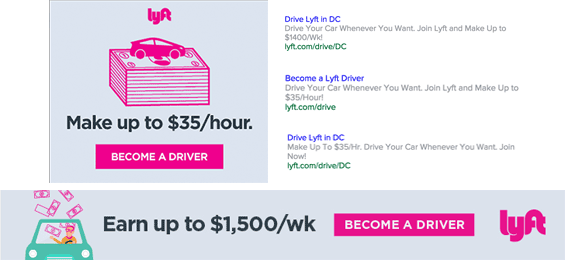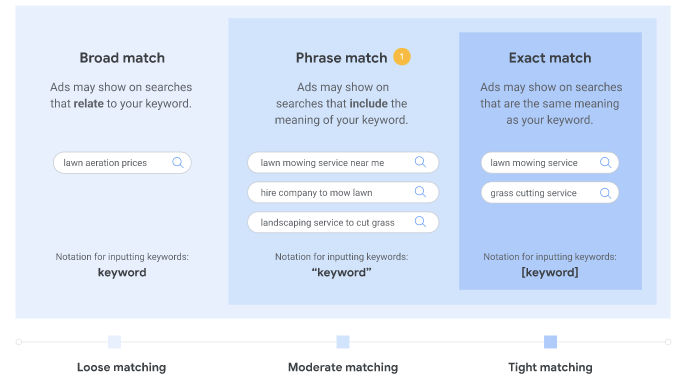The Comprehensive Guide to PPC in Digital Marketing
We all want more website visitors so we can sell more products or services, right?
Successfully advertising our products and services comes down to savvy marketing and what types of strategies we use to target visitors and, ultimately, turn them into paying customers.
One of those strategies is PPC—pay-per-click—where we pay every time a potential customer clicks on one of our ads. They appear in many forms, such as text ads, image ads, or video ads, and on many different platforms such as Google, Facebook, or LinkedIn
Either way, you only pay when a person clicks on them. And this article will break down how to build a strategy that makes those clicks worthwhile and targets the right people.
You’ll learn:
- What PPC is in digital marketing
- How PPC decides what ads to show to people
- Google’s PPC power goes beyond search engine results
- Tips for a successful PPC digital marketing strategy
Let’s build that strategy.
What is PPC in digital marketing?
PPC—otherwise known as pay-per-click—is an online advertising strategy where companies display text and image ads but are only charged when people click them.
In a way, PPC allows companies to get the best of both worlds when advertising. While you are essentially paying for people to visit your site, you only have to do it if they click on your ads.
If you contrast that with traditional media advertising, the difference is glaring: while those mediums show your ads to everyone and make you pay no matter what, PPC only charges you if a person takes action and visits your website.
That’s what makes PPC so versatile in digital marketing. Like traditional advertising, you can use it to promote brand awareness, but it is also a perfect tool to generate leads and sales because the ads lead people straight to your website, sales pages, or landing pages.
PPC ads come in all shapes and sizes. There are search engine text ads, social media ads, banner ads, and remarketing ads—just to name a few. Which type you use will depend on what marketing goal you are trying to achieve.
Here’s where PPC in digital marketing gets interesting.
In terms of search engine results, 75% of Internet users never scroll past the first page of search results, with the first advertisement slot netting a nearly 8% clickthrough rate. For example, searching “b2b marketing” using Google will give us this result:

The two top options are marked as “Ad”, which tells us that these are pay-per-click advertisements that companies have placed to drive traffic to their websites. What isn’t obvious is that “b2b marketing” is a popular search term, and lots of companies want their PPC ad to land at the top of Google’s search results.
So why is Google only displaying two search results?
How Google Ads decides what to show to people
Each time PPC ads are shown in a search engine results page, they don’t appear randomly—they’ve been chosen from a combination of matching to a keyword you have bid on and your bid winning a bidding auction.
Keywords are simply phrases that correspond to what users are searching for in Google, in our example above we can bid on the search term “b2b marketing” as a keyword. When a user then searches the phrase ‘b2b marketing’ our ad will be thrown into an auction against other competitors also bidding on ‘b2b marketing’. The winner of the auction will be shown at the top of the page.
Winning the bidding auction is more than just which advertiser is willing to pay the most. Search engines and social media companies will also decide which ad to show based on other factors like ad quality, keywords, and other contextual signals such as device, location, and time of day.
In our previous example for “b2b marketing”, once the term is typed into Google, this happens:
Google Ads finds all the ads whose keywords match “b2b marketing”
❌ Google then finds any ads that don’t match the search term and discards them
✅ Google scores the ads that match the search term based on how much the company has bid, the quality of the ad, the search intent, and the extensions in the selected ads. The ad with the highest score will appear at the top of the search result page, whilst the ad with the second-highest score will appear second, and so on.

To show up in Google’s paid search results, you need to have a winning combination of keyword match, search intent, and bid.
Whilst several years ago you would manually adjust each bid, Google has developed powerful automated bidding strategies. These automated bidding strategies work using set predetermined limits and goals on what you are willing to bid for each ad placement. Then, Google bids on your behalf against others.
When you set these limits, it’s important to remember what you want the ad to achieve. Here are Google’s tips for choosing an automated bidding strategy across Google Search (and Google Display Network, which we will discuss further down):
- Smart bidding: For when you want customers to take direct action on your site. If you are using conversion tracking and want to focus on conversions, Smart Bidding does just that.
- CPC bidding: For generating traffic to your website which is measured in click costs. Cost-per-click (CPC) bidding may be right for your campaign.
- vCPM bidding: For building brand awareness that’s focused on impressions, you can use cost per thousand viewable impressions (vCPM) bidding to put your message in front of customers.
- CPM bidding: For running video ads and increasing views/interactions with your ads, you can use cost per view (CPV) or cost per thousand impressions (CPM) bidding.
- CPV bidding: For running video ads where you want to increase product or brand consideration, you can use cost per view (CPV).
When choosing one, Forbes’ Young Entrepreneur Council (YEC) recommends testing out different bidding strategies.
“Google has several automated bidding systems in place based on what you wish to achieve: exposure, clicks, and conversions or even trying to hit specific costs per conversion,” the council says.
“You will want to have your account up and running for some time before using one of these automated bidding strategies, as past account history plays a role in their effectiveness.”
From our experience, leaving around 2 weeks from a campaign launch to gather data before placing campaigns on bid strategies and then a further 2 weeks for the bid strategy to adjust to campaigns, works well as a good general rule. If you have more data in your account this might work faster and with less data it might take longer.
There can also be initial volatility for the first few days after putting campaigns onto bid strategies, however, after this initial volatile period performance will become more predictable. From our experience, having more data before putting campaigns onto bid strategies and setting goals similar to previously achieved performance are good ways to mitigate this volatility.
Google’s PPC power goes beyond search engine results
Google Ads is a vital part of any digital marketing PPC strategy, but Google also has a broader paid search reach thanks to Google’s extended advertising network.
This advertising is split into two parts: Google Search Network and Google Display Network.
If you choose to have your PPC advertising spread over the search network, your ads will show up in Google’s search results and Google Maps, Google Shopping, and other search partners. Google’s Display Network displays ads on Google partner websites, Gmail, apps, and even YouTube to make sure you get as many eyes on your ads as possible.
When you are creating a PPC campaign on Google Adwords, you can pick what network you want your ads to show up on:

Like search engine results, whether or not your ad shows up on these extended networks will matter more than just your bid. Your ad’s relevance, copy, and your account’s quality score will help Google decide whether your ad will be relevant to the person viewing it.
Display advertising
Display ads are banner, test, and image ads that are shown on relevant third-party websites outside of Google.
See this?

That’s a display ad. And clicking on it sends me here:

The page I landed on makes sense. Forbes assumed that because I was browsing on the business section of their website, there’s a possibility I own a business and therefore interested in their Samsung for Business range.
This is the main aim of display advertising—brand awareness. Ads like this are targeted at people who may just be discovering your brand, and it’s up to you to keep them interested.
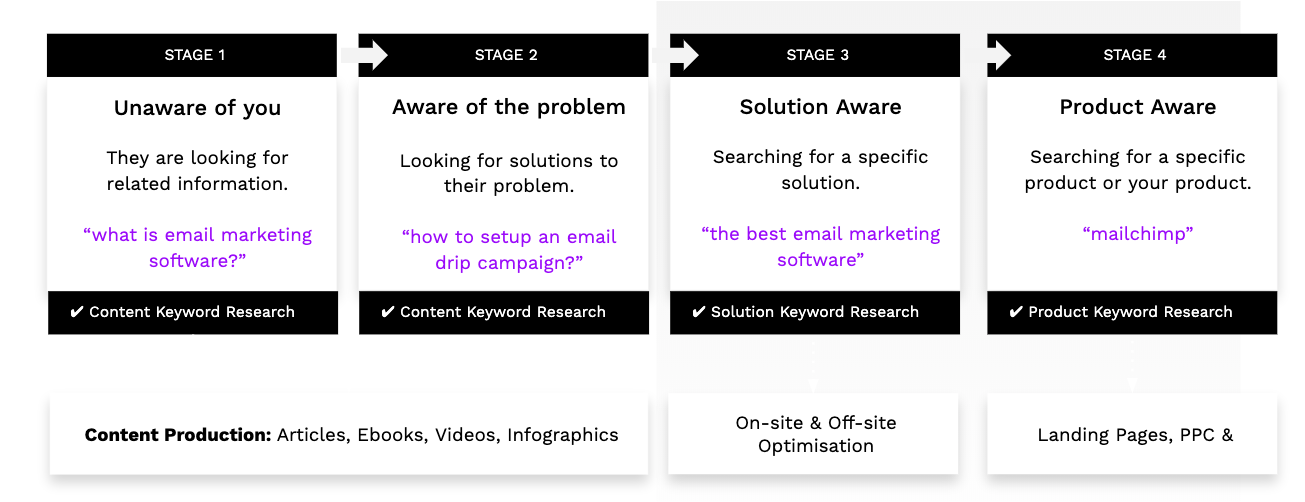
Suppose this is a goal of your digital marketing strategy. In that case, a healthy combo of Google Display Network partners and industry publications you know your target audience is reading is a great place to start.
As our own Darren Stewart correctly points out, the aim of display ad campaigns isn’t to just get your name in front of eyeballs; it’s important that they are the right eyeballs.
“There are a couple of ways to target your display ads, you can base it on keywords or audiences or a combination of both,” he says.
“We would usually recommend a combination of the two so that your targeting isn’t too broad or too narrow.”
When ridesharing app Lyft was trying to increase their brand awareness, they followed this exact strategy. Their only goal was attracting new drivers to grow the Lyft community, and the company used Google Display Network to increase conversions by 74% month-over-month to do just that.
To make sure the eyeballs looking at their ads were the right ones, Lyft focused on advertising to people who were good candidates to become drivers who would be looking to make extra cash. The company used Google’s in-market audiences tool to find potential Lyft drivers who actively browsed Google Display Network partner sites and YouTube.
Then, Lyft launched a campaign and ad group that targeted the in-market audience segments with ads like this:
“We saw overall conversions increase by 74% month-over-month after we implemented in-market audiences, which indicates that these were new conversion sources rather than cannibalization from current channels,” marketing manager Noah Tian says.
And his advice for launching a display ad strategy?
“Target narrowly, track cost per acquisition at the segment level, and understand how your users’ lifetime values change as you iterate.”
Social media remarketing
Not everyone who visits your website will convert on their first visit—that’s just business.
But thanks to PPC advertising, there is a way to win them back on social media. It’s called remarketing. If someone has visited your website and you have tracking code installed on your site, you can remarket your products and services to them on their social media feeds as a way to get them to come back.
You can also get super precise when remarketing to people on social media because you can target based on:
Location
Demographics
Interests
Behaviors
Education
Social media remarketing is also widespread.
You can use this tactic on tools like Facebook, Instagram, Twitter, and LinkedIn. Here’s a perfect example of Entrepreneur retargeting me on Facebook after I was on their site looking at articles about PPC in digital and B2B marketing:
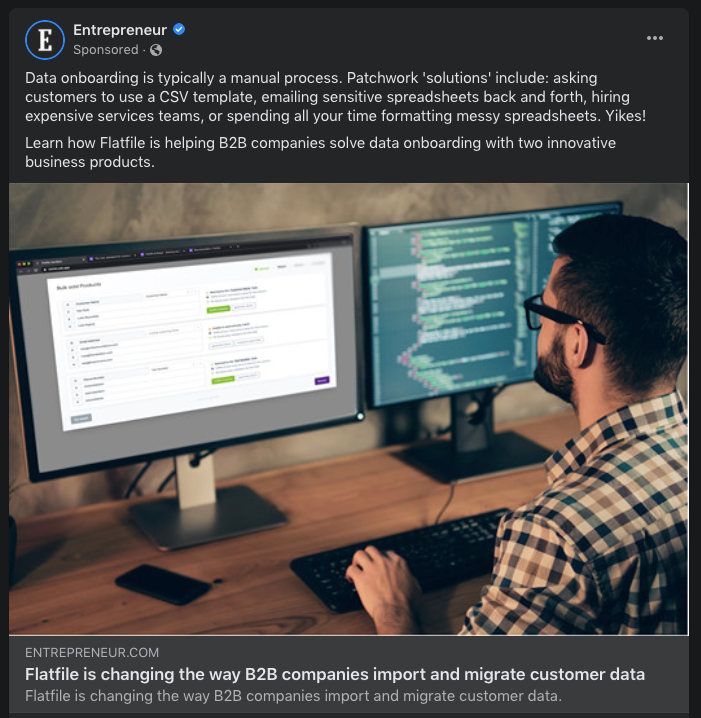
Interestingly, this retargeting ad clearly catches my attention because it is about something I was just reading on their site (B2B marketing). After I clicked on the ad, the article was about a B2B product, which Entrepreneur was an affiliate.
This changed my perception of the remarketing ad: it wasn’t a brand awareness ad; it was trying to generate sales.
This is the beauty of social media retargeting. If it’s done right, your advertising goals’ differences can be subtly hidden to the person you are targeting. Instead of feeling sales-y, you instead give the reader the impression that you want to build their knowledge.
Genius
Tips for a successful PPC digital marketing strategy
Tip #1: Have clear goals
PPC in digital marketing can target different behaviors and goals: if you want someone to just know about your brand, the ads won’t look the same as the ones you are using to sell your products.
So, it’s important your marketing strategy reflects this, and you outline the goals of your campaign before you launch it.
- Brand awareness: To familiarize your target audience with your brand. This campaign strategy is perfect for showing customers your products and services, or if you have a new product release coming up
- Lead generation: You aren’t necessarily looking for people to buy, but you want them to commit to something, like your newsletter or handing over their contact information. These ads can involve lead magnets like eBooks or webinars to sweeten the deal
- Promotions: Perfect for companies who want to draw in new or existing customers using discounts, limited-time specials or introduction offers. These ads usually direct a target audience to a landing page with a focus on getting them to follow through with their purchase
- Sales: For driving sales or conversions from targeted customers who are ready to buy. Also useful for engaging with customers who you’ve already talked to and are close to making a buying decision, but need a little extra persuasion
This might seem unnecessary, but picking a goal for your campaign can anchor your messaging and targeting once you start designing your ads and writing the copy.
Tip #2: Research the right keywords
Picking the right keywords to target is arguably the most important part of any digital marketing campaign.
Not only will it impact how many people end up seeing your PPC ads, but it can also correctly match the ads people do see with their search intent. You know how we keep going on about getting the right eyeballs on your ad? Well, the work you put into your keyword research will determine that.
The more specific your keyword, the better chance you have of matching a person’s search intent. It also brings you closer to finding the keyword sweet spot—advertising terms that other brands aren’t bidding on. These are called long-tail keywords.
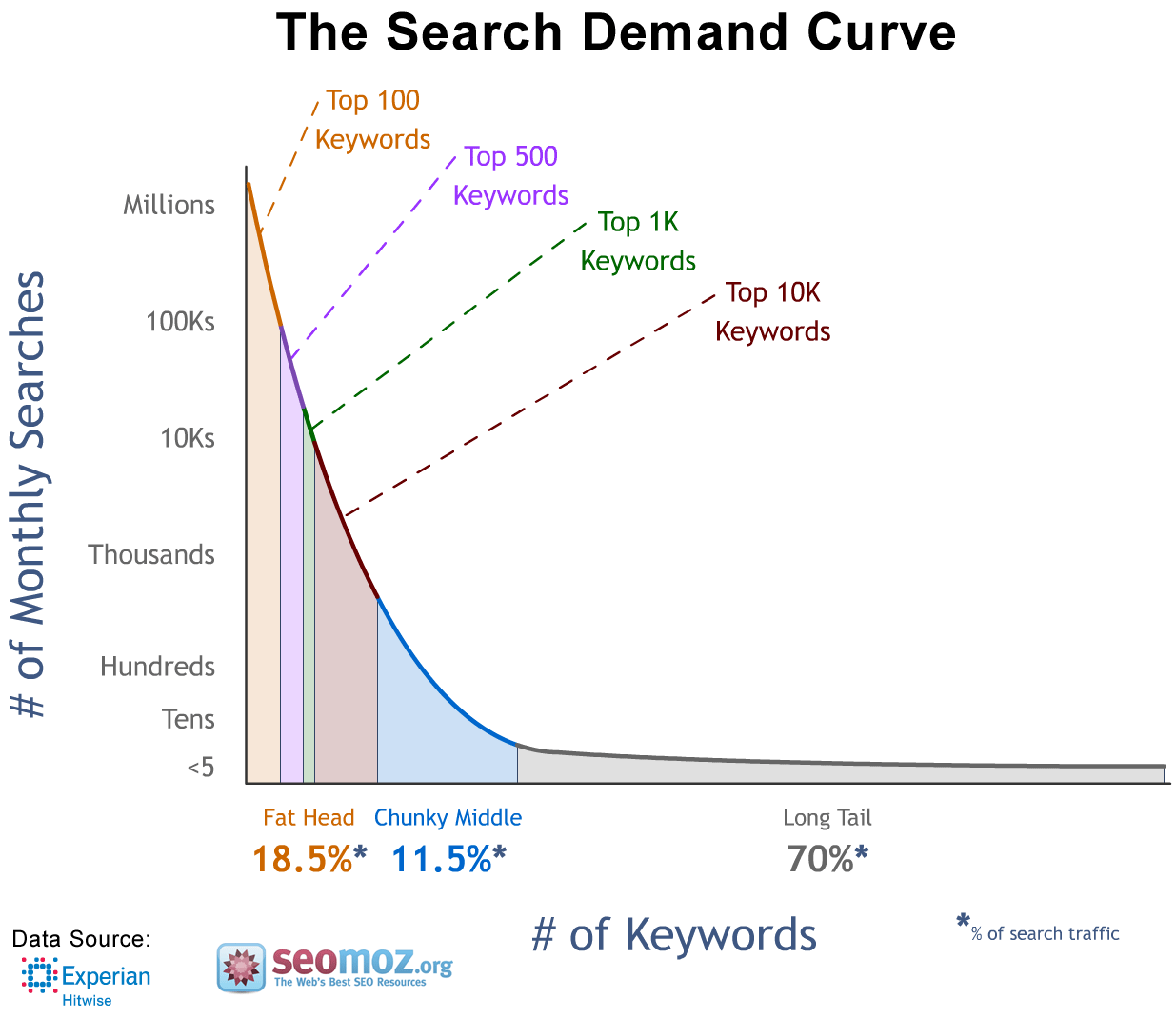
You also need to decide how Google will interpret the keywords you choose. You can choose between broad, phrase, and exact match keywords on your PPC ads. Here’s what will come up for the keyword “lawn mowing service”:
To use our agency Clarity Performance as an example, we could target companies searching for things like “b2b marketing agency london” or something similar. Because they’ve included a location in their search, you could argue their intent is clear: they know what B2B marketing is and they want an agency to help them out.
Using SEMRush’s Keyword Magic Tool (our tool of choice), we can see how many people are searching for this term and what other companies are paying to bid on ads to show to those who do. Here’s what comes up:

There it is in black and white. If we want to compete for this keyword, it’ll cost around £10 a click.
What you want to do when searching for keywords is to find the best of both worlds: keywords that you can afford to bid on that have a high search volume, as these are the ones that suggest high intent to purchase.
Tip #3: Write effective ad copy
Effective ad copy for PPC digital marketing campaigns requires more than just being persuasive.
There are some boxes your copy must tick to make sure your ad is chosen in bidding auctions:
- Use keywords: Even though you may win the bidding war, you should still include relevant keywords in your ad to attract attention from the searcher
- Use statistics/prices: Not only do they add interest, but they can also draw in your target audience if you are using your campaign to sell products
- Use a URL: Including a URL is important, especially for text ads. They help tell the searcher what site they will end up on if they do end up clicking your ad
- Use your brain: And check out what your competitors are up to before you write any ad copy. It’s important to make sure your message and offer is different to theirs to make it more enticing and to help differentiate your ad when Google is deciding what to display
For Intel, knowing how its target customers referred to products was key to tweaking their PPC ad copy and ultimately making their campaigns more successful. The company spent years advertising their notebooks because that was how they were branding their products.
There was just one problem. Their target customers weren’t searching for “notebooks”. They were searching for “laptops”. So, Intel changed up its advertising copy and keywords to include the word laptop instead.
Since then, Intel has leaned on PPC advertising and search information to figure out what their customers actually want.
“For us, now, paid search engine marketing is not an add on or adjunct. It’s a core component for integrated marketing,” online marketing manager Corey Carrillo says.
“We basically do not launch a product, an initiative or any new web content without some sort of search component, and that’s more often than not paid search.”
Funnily enough, Intel discovered this flaw in their advertising strategy nearly 7 years ago. And despite launching loads of new products, their PPC copy still reflects what their customers are looking for:
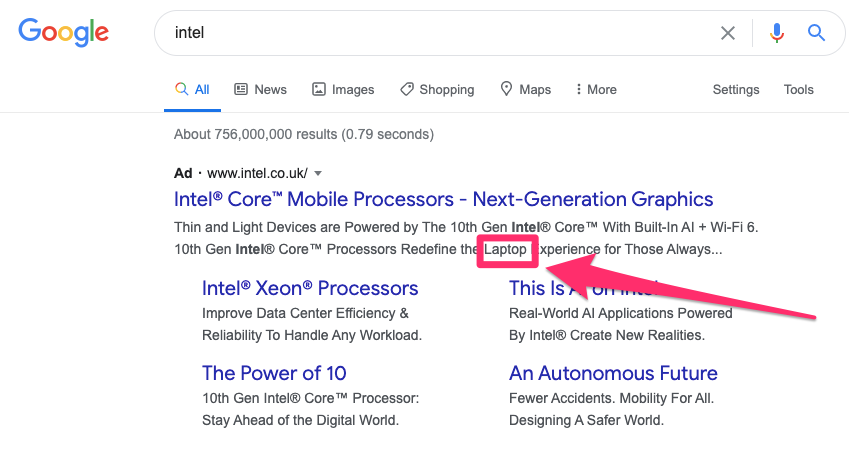
Time to get your message seen
Launching a successful PPC digital marketing strategy takes more than just putting an ad up on Google or social media and hoping for the best.
It takes planning, research, and precision to make any PPC digital marketing effort worthwhile.
Not only do you need to decide what you want your advertising campaign to achieve, but you also have to take a deeper dive into what your target audience is searching for and write convincing enough ad copy that they’ll actually click on it.
This can be a daunting task, which is where hiring a B2B digital marketing agency can turn a jumbled marketing idea into a successful PPC digital marketing strategy. We can find out what your target audience is searching for, figure out what platforms are best for your ads, and use effective copy to drive them to your website.
Click here to find out more about our PPC marketing services!


